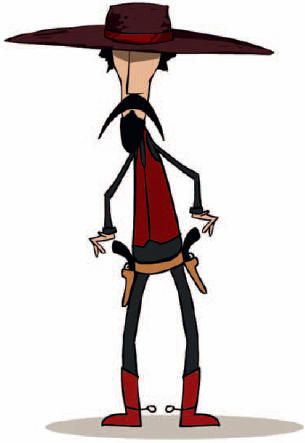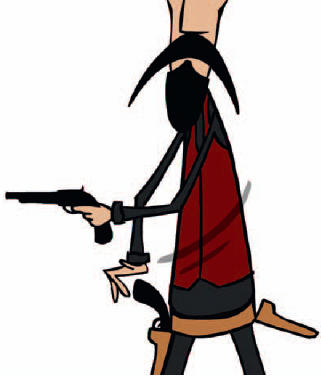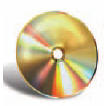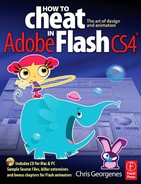
HERE’S ANOTHER COOL TRICK to suggest movement between two keyframes. Open the “cowboy.fla” from the included source CD and play back the animation. The technique being used is basically a mixture of frame-by-frame animation with a variation of blurring and stretching. Look closely at the movement of the cowboy’s arm when he reaches for the gun. There’s only two frames where this effect is used and at 24 fps it’s almost impossible to see. Yet the effect is still visually effective as it really smooths out the motion of his arm through the gesture of reaching and drawing his weapon.

1 The first step is to add a little anticipation (refer to the “Anticipation” topic to learn more). Rotate the arm into a position that suggests he is about to grab something (refer to the “Hinging” topic to learn more about rotating body parts based on a custom center point). I also added some “itchy-finger” animation to build up the anticipation and focus the attention on his hand.

2 Replace the arm with some very simple shapes drawn freehand style with the Brush tool. The fill for the arm is a mixture of black and about 30% transparency. The fill that represents the hand is the flesh tone mixed with some transparency as well.

3 You can mix in a little alpha by typing in a percentage manually or using the handy slider bar. Add this new color to your Swatch panel using the upper right corner drop-down menu.

4 The next frame is similar to the previous frame. I used the Brush tool again to draw new shapes using the same colors. Turn on the Onionskin tool to see the previous frame as a reference.

5 After two frames of blurring, it is time to bring the original arm back to the animation and in a new position. You will notice I also added some brush strokes behind the arm to suggest the arm is still moving but decelerating.

6 When a gun is fired, the resulting action is referred to as “recoil”. We have Sir Isaac Newton to thank for showing us that every action has an equal and opposite reaction. This law of physics is critical for us to understand and, when necessary, incorporate into our work.

Hot Tip
The selective blurring technique works best when it is barely seen. If it stays on stage long enough for the viewer to notice it as an object, it has performed a disservice to your animation effect. In essence, this technique should enhance the motion as a whole, not introduce an additional component to it. It should be subtle and used sparingly for a greater overall effect.
![]()
